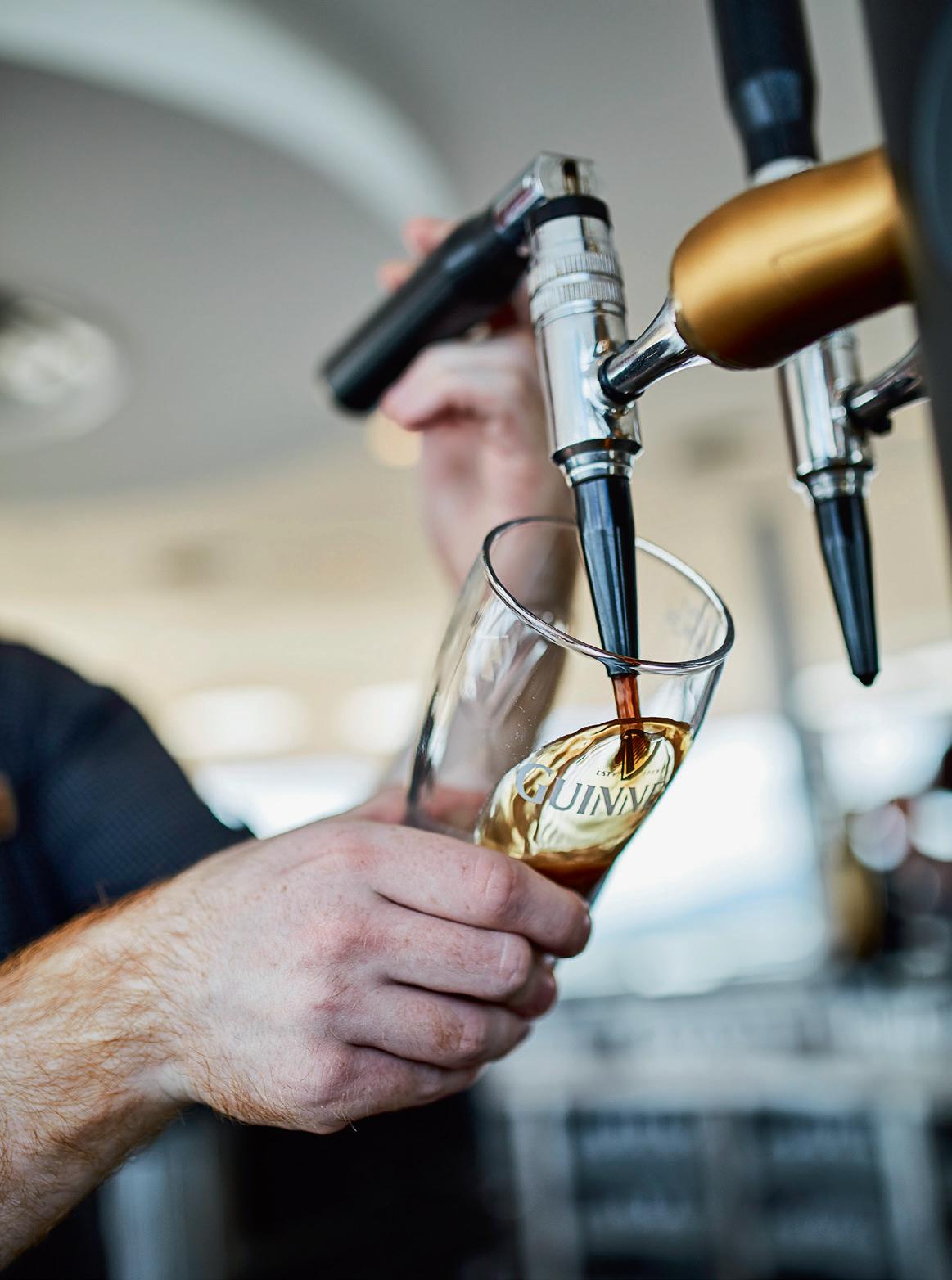
3 minute read
CULT OBJECT
The perfect PINT
A GORGEOUS GLASS, A BEAUTIFUL BEER. GUINNESS BEER, THAT IS, ON TAP AT ANY SELF-RESPECTING PUB. BUT WHAT ARE THE SECRETS TO THE PERFECT HEAD?
By Boris Coridian Photo Mickaël A. Bandassak
SO OFTEN IS IT CLASPED IN THE HANDS OF THE IRISH THAT ONE ALMOST FAILS TO NOTICE IT’S THERE. Along Dublin’s bustling streets, the pint – that glass that holds exactly 568 millilitres – is emptied as quickly as it is filled, particularly after work and on weekends. A person orders one (or more) at the bar before going to drink it in good company, inside or outside the pub. The pint, in fact, unites the Irish (those over 18, the country’s legal drinking age). Still, for this unit of measure – inherited from neighbouring England – to become an utterly Irish national symbol, it had to be associated with an utterly Irish beer. Guinness Stout, a dark beer produced since 1759 in the original brewery in the centre of the capital, has become the greatest ally of this ample half-litre. All over the city, the harp, the brand’s logo since 1862, is displayed on both pubfronts and glasses. Drinking a draught Guinness is one of Dublin’s authentic rituals. Each day, 10 million pints are consumed across more than 100 countries, giving those who quaff it a moment of genuine Irishness. The silky texture, ebony hue – in stark contrast with the pristine white foam of the head – and a refreshing, bitter flavour combine to make it a national treasure. But before placing one’s lips on the rim of the flared glass to enjoy the perfect pint, one must show proof of patience.
The slender profile, voluptuous curves and wide mouth of the Gravity glass (available since 2013) are not of haphazard design. Au contraire: this slightly rounded, inverted cone is the setting for a celebration of the thick foam and heady bouquet of barley and hops. The golden harp engraved on the glass’ upper section shows where the liquid should hit the glass from the tap, so as to tilt the glass at the ideal 45° angle. The bartender pulls the pump (or tap-tower handle) toward his (or her) person, for the initial flow of beer, to which is added the nitrogen gas needed for proper consumption. The logo also serves as a gauge, to know when to stop filling the glass because a break is needed at this point (for the beer, not for the bartender, who remains on duty!). About 90 seconds must pass before s/he takes the pint in hand again and finishes filling it by pushing, rather than pulling, the pump, allowing only the brown liquid to flow without adding the gas. The fine bubbles form elegant swirls and scrolls before amassing on the surface in a thick head of foam rising higher than the rim. The pint is ready! In the Gravity glass, a raised curve – again a nod to the harp motif – guides the hand naturally toward the base. “This shape was designed specifically to make sure consumers don’t heat up the beer too quickly with their hands. The ideal drinking temperature is 6° C. The glass used previously, the Tulip, or even older models in a variety of shapes, were simpler designs. That’s why I really prefer the new version. It means you can have the best experience possible drinking Guinness on tap,” explains the brand’s expert, Domhnall Marnell, as he stands behind the counter of the aptly named Gravity Bar (on the top floor of the Guinness Storehouse fj), which enjoys a magnificent location over Dublin. n










